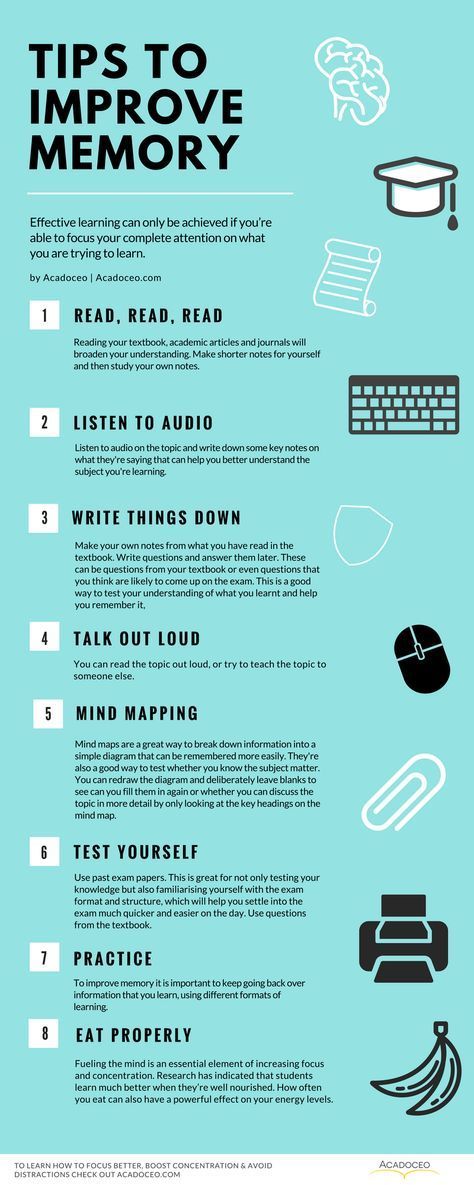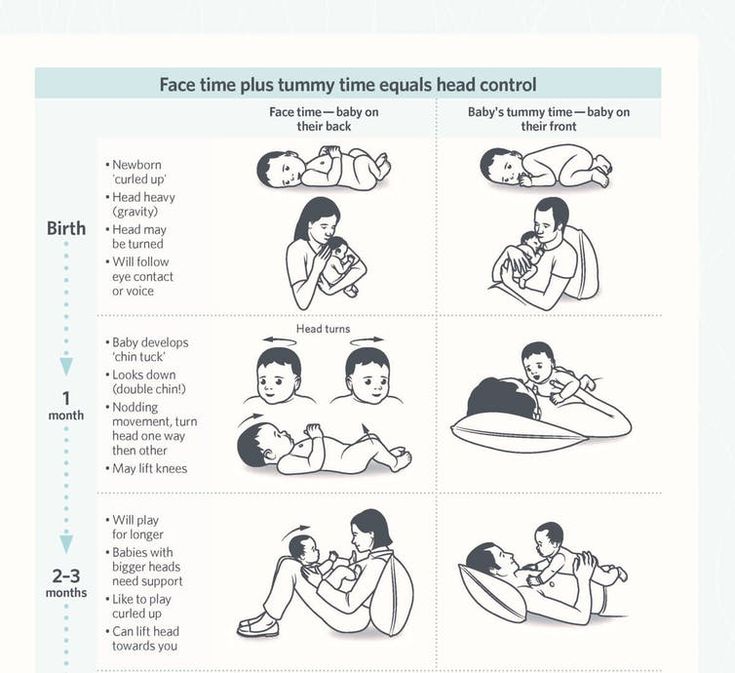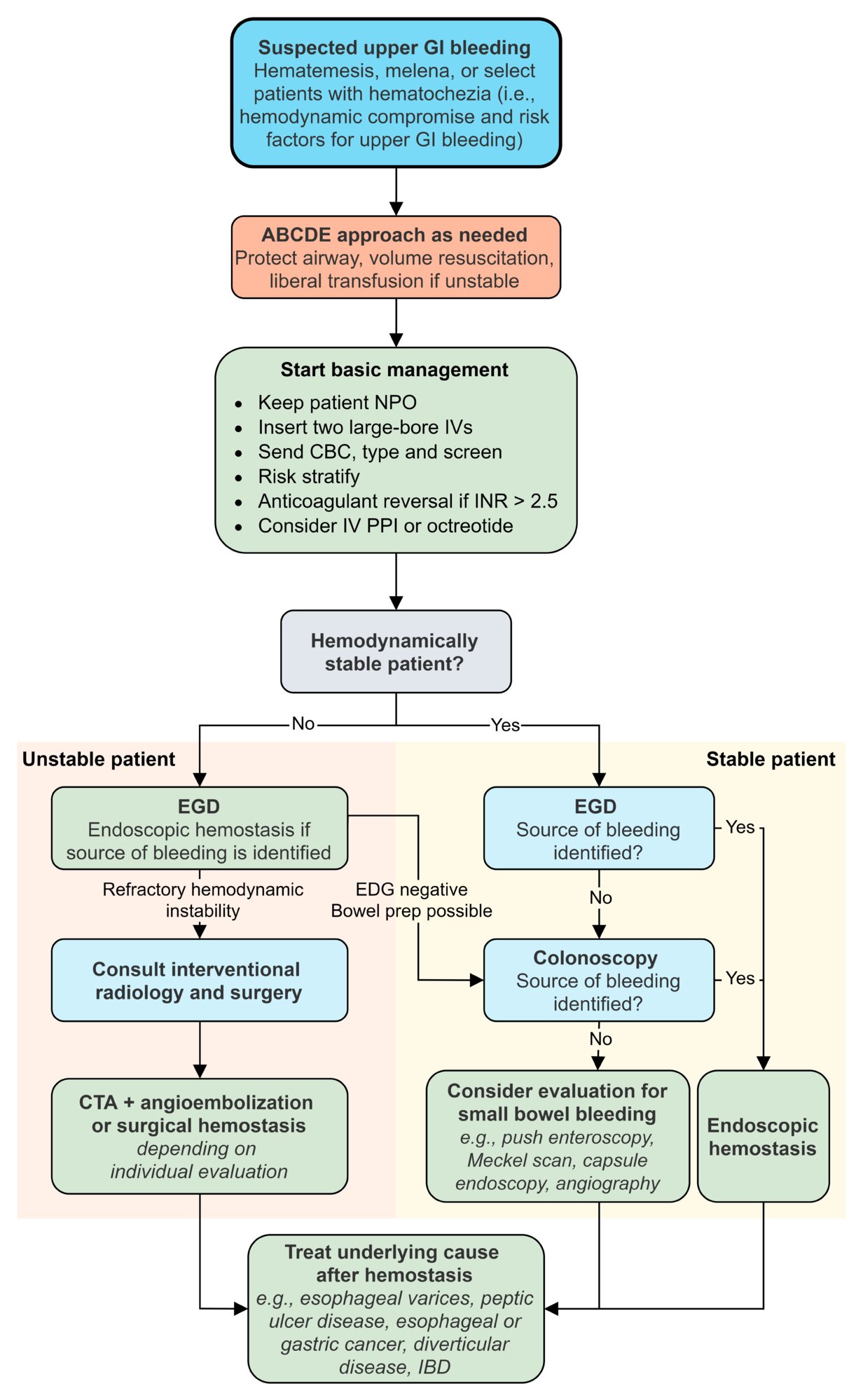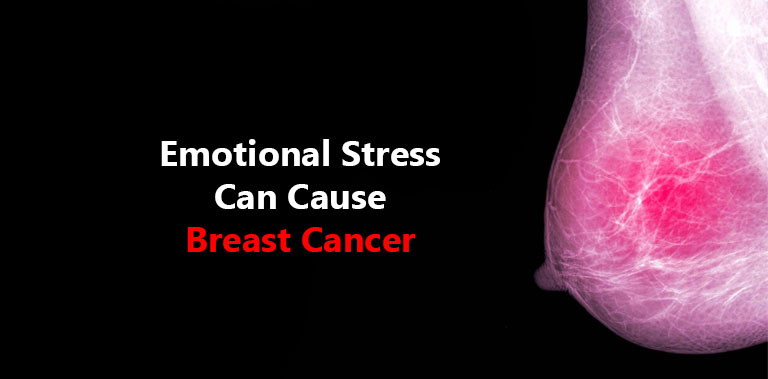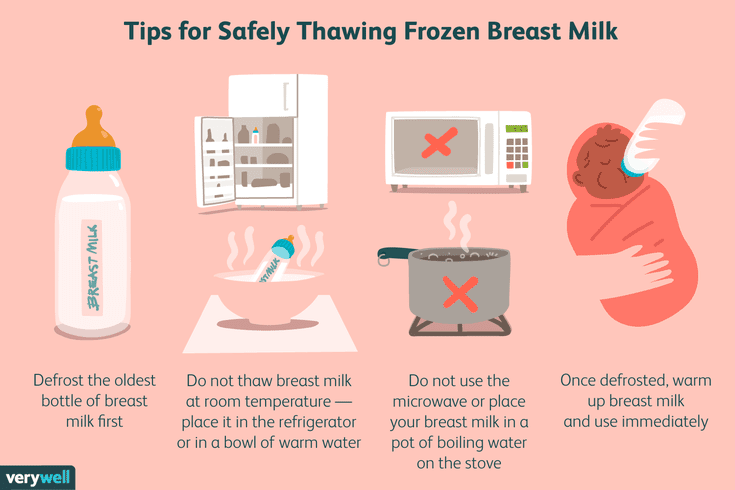Working out before 6 weeks postpartum
How to Exercise Postpartum Before 6 Weeks (Safely & Effectively)
Are you wondering if you could work out before 6 weeks postpartum?
Well, I have some good news for you.
After reading this post, you are going to learn:
- how to tell if you can exercise before the 6-week mark,
- safe exercises you can do in the immediate postpartum period, and
- warning signs to look out for.
Let’s get started.
Disclaimer
***READ FIRST***
Although I am a doctor, I am not your doctor. This information is for informational purposes only and should not substitute the advice from your healthcare professional. All kinds of exercise and dietary changes are potentially dangerous, and those who do not seek counsel from the appropriate health care authority assume the liability of any injury which may occur. Please read my full Disclaimer for more information. Also, this post may contain affiliate links: meaning I may receive a commission if you use them.
Ok, moving on.
How long do you have to wait to work out after pregnancy?
The general recommendation is to wait at least 4-6 weeks postpartum before doing any type of moderate-intensity workouts.
However, everyone is different.
You might be ready sooner, or you might need more time.
The most important thing is to speak with your health care provider first before starting any formal exercise postpartum.
You may have a medical contraindication that could prevent you from working out right away.
Why do you have to wait six weeks after giving birth to exercise?
The reason you have to wait 6 weeks before working out is that your body needs time to heal. This is especially true if you had a c-section.
Just think about it.
After delivering your baby:
- Your uterus needs to shrink from the size of a watermelon to the size of a deck of cards.
- Your abdominal muscles are stretched and weakened.
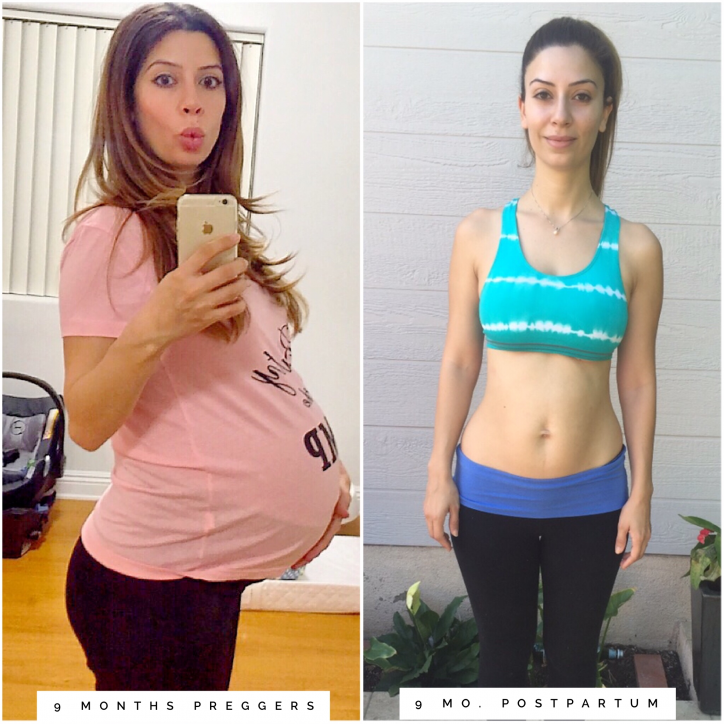
- You may have had a vaginal laceration that required stitches at the time of delivery.
- You may have had a cesarean section that needed multiple layers of tissue to be cut and sutured back together.
6 weeks is a conservative estimate to allow your body to bounce back from a postpartum state.
What happens if you don’t wait Six weeks To Exercise after having a baby?
If you begin exercising too soon after having a baby, you increase your risk of certain conditions such as:
- Bleeding,
- Infection,
- Back pain,
- Urinary incontinence,
- and musculoskeletal issues.
However, if you take your time and do it right, you will probably be okay.
I go over some safe ways to do so below.
But as always, check-in with your doctor first.
So How Can I work out before 6 weeks postpartum?
While the official recommendation is to wait until you are 6 weeks postpartum before exercising, you might be ready sooner, especially if you:
- Were very active pre-pregnancy
- Maintained some activity level during pregnancy
- You had an uncomplicated delivery
- You have received clearance from your medical doctor
If your doctor has cleared you to work out before 6 weeks, the very first thing you must do is listen to your body.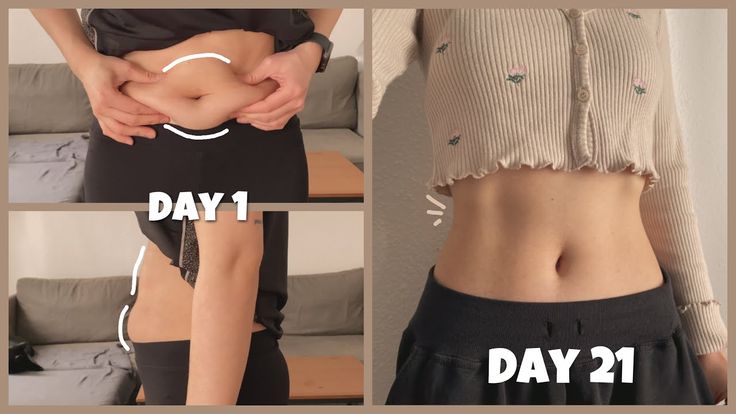
You know your body better than anybody else, and you must assess how you feel.
If you feel ready to work out, go for it!
Just make sure to start nice and slow. Do one thing at a time, and see how you respond. If it feels good, keep going.
If you don’t feel ready, that is completely fine. Wait until you feel ready.
What About Sooner? Can I exercise 3 weeks postpartum?
According to the American College of Obstetrics and Gynecology (ACOG), it is safe to engage in low-intensity workouts as early as a few days after delivery (provided you had an uncomplicated delivery).
As always, the most important thing is you listen to your body.
Start light and go slow. If anything causes pain or discomfort, stop and let yourself recover.
Here is a list of 3 week postpartum exercises you can do.
Walking
Walking is the most underrated exercise you could perform immediately postpartum.
There are so many benefits of walking, including:
- redistributing the fluid in your legs,
- strengthening the muscles and joints in your legs,
- improving your circulation, and
- burning calories
If appropriate, I even encourage my patients to begin walking the same day of giving birth.
Always carry a water bottle with you, and make sure to wear loose-fitting, breathable clothing.
Aim to walk at least 10 minutes per day and work your way up.
Kegel Exercises
Kegels are another underrated exercise that most women forget to do.
This exercise is CRITICAL to do postpartum.
Why?
It’s the best way to rebuild your pelvic floor, which decreases your risk of pelvic organ prolapse and urinary incontinence.
You are at risk of these conditions regardless of the type of delivery, as these muscles become very weak throughout the pregnancy.
Here’s how it looks:
- A kegel contraction can be down while standing, sitting, or lying down.
- To perform the kegel, inhale to expand your belly and slowly begin exhaling. As you exhale, squeeze the muscles of your pelvis as if you are trying to prevent yourself from pooping.
- This not-so-pleasant thought is the best way to activate all the pelvic floor muscles at once.
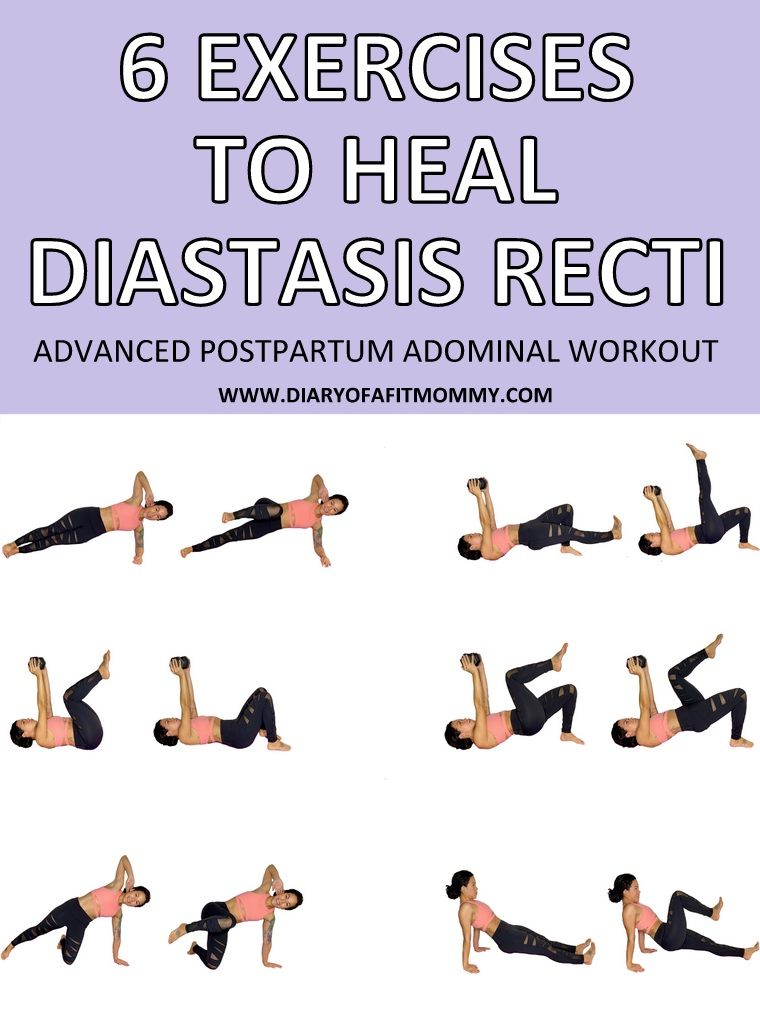
- Hold the contraction for 3-5 seconds, and then release it.
- Repeat for 6-8 repetitions before taking a break.
Diaphragmatic Breathing
This gentle and straightforward exercise teaches you the correct way to breathe by engaging your core muscles. As a result, you strengthen the deep, transverse abdominal muscles.
Here’s how it should look:
- Assume a seated position with your knees bent and crossed, as shown above.
- Make sure your shoulders are relaxed, and you are not shrugging.
- Now, place your hands over your belly button and take a deep breath by expanding your belly to its fullest capacity. You should feel your hands moving. Your shoulders should not move at all.
- Hold the inhale for 1 second, and then slowly begin to exhale.
- While exhaling slowly, you will feel your hands moving towards your body.
- Contract your ab muscles at the end of the exhale and aim to exhale over 5 seconds.

- Repeat.
Box Squats
The following exercise involves squatting, one of my favorite exercises.
Box squats are the safest variation and one that you should be able to perform soon after delivery.
Check out How Soon Can I Squat After Giving Birth for more details.
Here’s how it looks:
- Find a chair or box that is at the level of your mid-thigh.
- It should be high enough so that your knees aren’t bent to 90 degrees when you sit on it.Assume a shoulder-width stance with your feet slightly in front of the chair or box.
- Squat down by bending at the hips and knees simultaneously while keeping your core muscles engaged and your back flat.
- Graze the chair with your bottom, and stand back up by squeezing and leg and glute muscles.
Aim for 6-8 reps.
As you get stronger, you can lower the height of the chair/box.
High Wall Sits
Wall sits are another favorite of mine as they really activate and develop almost all of the muscles in your thighs.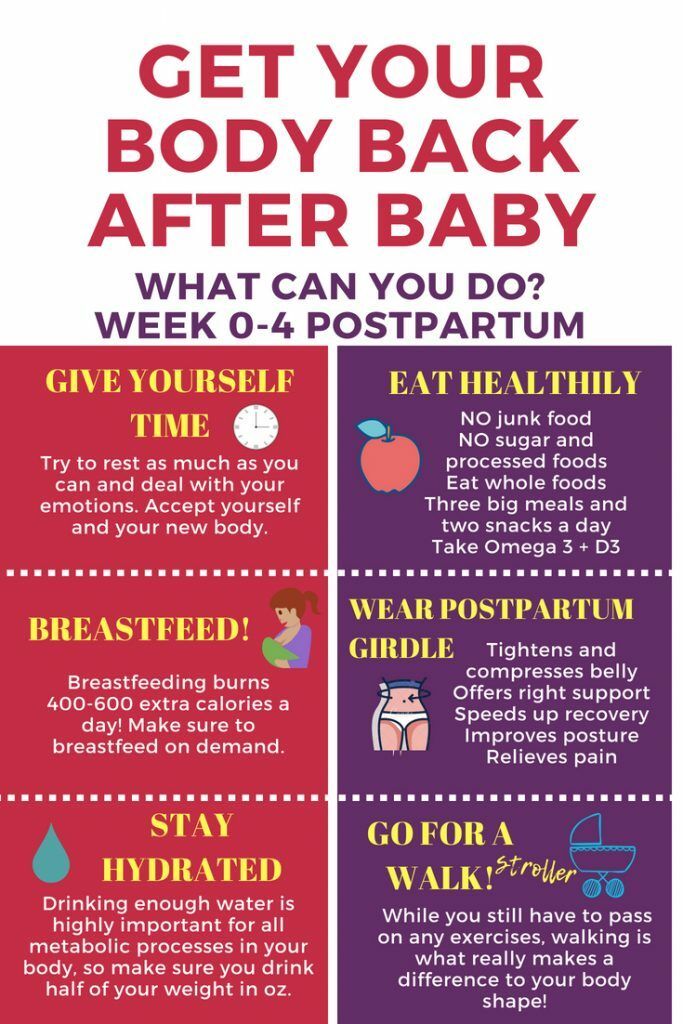
Make sure you take this exercise slowly, as it could be challenging to get out of if you slide down too low.
Here’s how it looks:
- Find a wall, and stand approximately 12 inches in front of it.
- Lean against the wall and slide down the wall until you are slightly higher than a seated position.
- Hold this position for 20 seconds and then slide back up the wall to the starting position.
Wall Pushups
Wall pushups are the easiest and most convenient way to strengthen and tone your upper body in the postpartum period.
This variation is very safe and will help you focus on your form.
Here’s how it looks:
- Find a wall and stand about 12 inches away from it.
- Place your hands on the wall, shoulder-width apart.
- Brace your core muscles, squeeze your glutes, and bend your elbows.
- Make sure to keep your elbows tucked and close to your body.
- When your forehead touches the wall, press back out to return to the starting position.
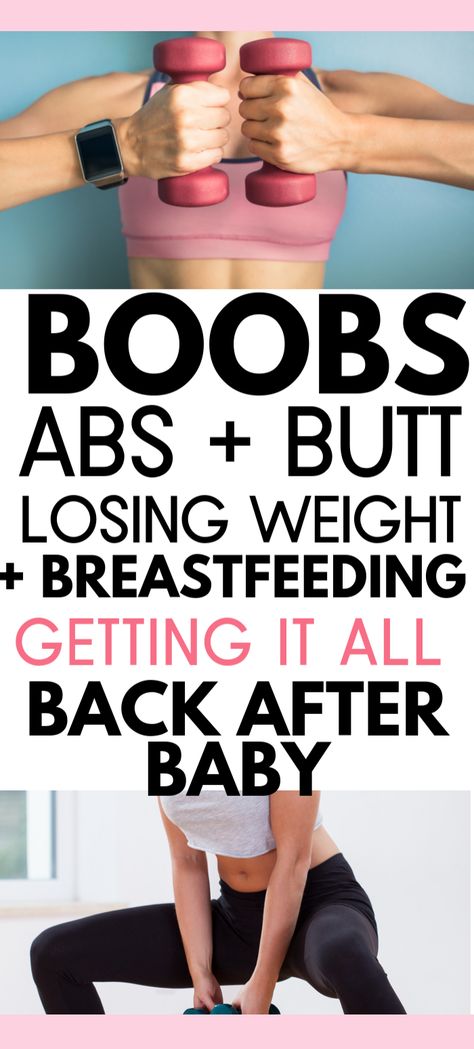
- Do your best to keep your core engaged throughout the movement, and do not let your spinal alignment change.
Aim for 6-8 reps.
Posterior Tilts
Posterior tilts are another great gentle exercise you can do before 6 weeks postpartum that teaches you how to activate your core and restore normal posture.
Pregnancy tends to cause anterior pelvic tilt, a postural condition leading to low back pain and other spinal issues.
Here’s how the exercise looks:
- Lie down on the floor with your knees bent and feet flat on the floor.
- Your low back does not make contact with the floor, as there is a natural curve in your low back.
- Now, focus on sucking in your belly to flatten the curve so that your back makes contact with the floor.
- At the same time, allow your tail bone to rotate up towards the sky.
- Hold this position for 5 seconds.
Aim for 5 rounds.
Standing Hip Extensions
The last safe exercise to perform before 6 weeks postpartum is the standing hip extension.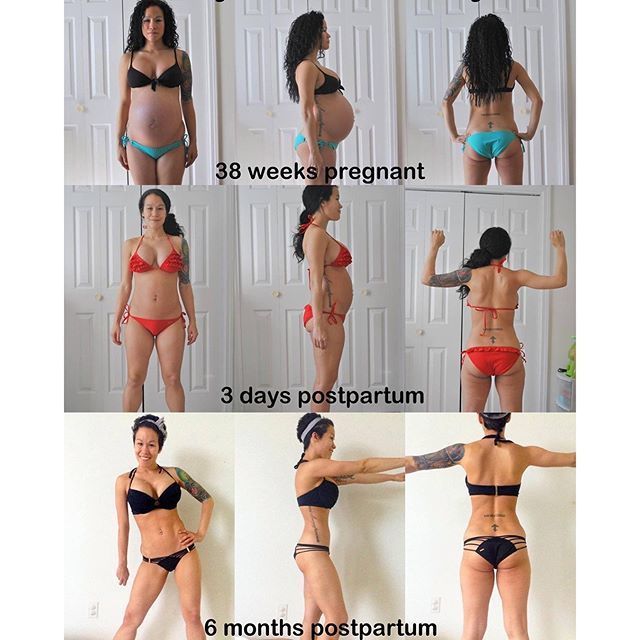 It is fantastic for strengthening your booty (which becomes weak and deactivated during pregnancy- check out How To Get My Bum Back Postpartum to learn more.)
It is fantastic for strengthening your booty (which becomes weak and deactivated during pregnancy- check out How To Get My Bum Back Postpartum to learn more.)
You can do this exercise with one of the postpartum trainer resistance bands for increased difficulty.
This exercise can be performed with one of the postpartum trainer resistance bands for increased difficulty.
Here’s how it looks:
- Stand against a wall with your feet and hands shoulder-width apart.
- While holding onto the wall, brace your core, squeeze your glutes, and kick one leg out straight behind you without bending your knee.
- Do your best to perform the entire movement using only your glutes. Try not to let your spinal alignment change.
- As you can see, the range of motion is relatively short.
- Try adding the red postpartum trainer resistance band around your lower legs if this is easy for you.
Aim for 6-8 reps.
So there you have 8 exercises that are safe for you to do before 6 weeks postpartum.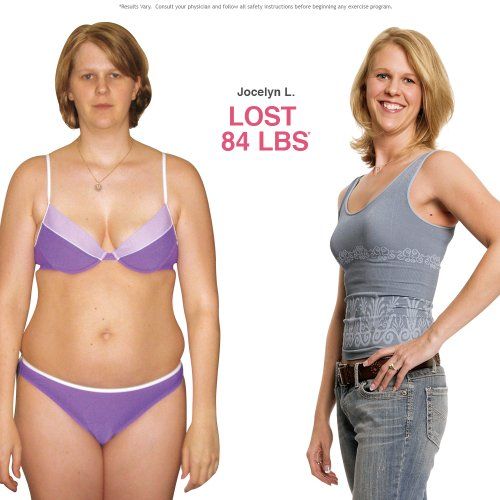
Do them responsibly and always take things one step at a time.
Do I need to exercise in the first few weeks?
In general, almost all postpartum women should do some type of exercise in the first few weeks postpartum.
These include exercises such as:
- walking,
- diaphragmatic breathing, and
- pelvic floor exercises.
How do I know if I’m exercising too much after birth?
Your body is amazing at non-verbal communication.
It will provide you with signs and symptoms that you are exercising too much postpartum.
You may start to feel pain from everyday activities, and you may begin to feel more tired than usual.
Also, specific movements may just feel funny.
Just pay close attention. Your body is always giving you feedback!
Just to be safe, here is a quick summary of guidelines you should follow.
Postpartum exercise guidelines
Here are some postnatal exercise tips you should follow when starting to workout:
Speak to your doctor first and make sure you are cleared
- I cannot stress this enough.
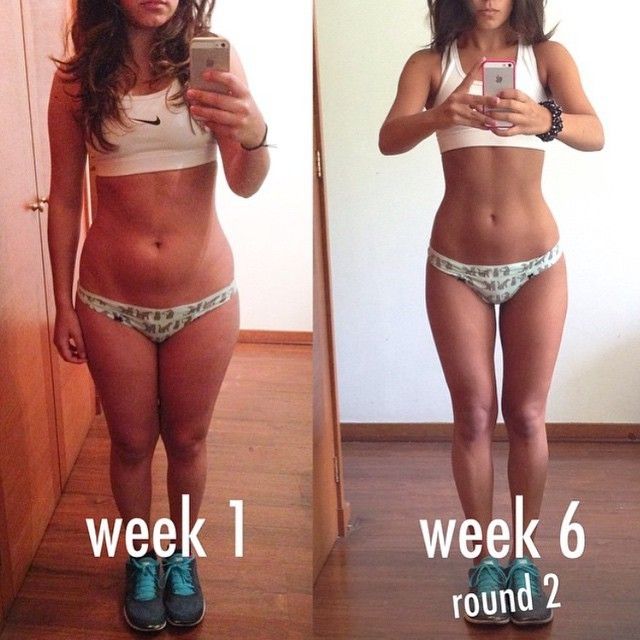 Please do not start exercising without speaking to your provider first.
Please do not start exercising without speaking to your provider first.
Wait until your pain is gone to start exercising
- If you are still experiencing pain, it is probably a good idea not to work out. Your body is amazing at communicating with you, so make sure you are listening.
Wait for the bleeding to stop before you workout
- If you are still experiencing lochia, aka vaginal bleeding after birth, you may want to avoid exercising. Anything more than 1 pad an hour is concerning, and you should speak with a healthcare provider.
Pay attention to any joint pain or discomfort
- Your body releases a hormone called relaxin during pregnancy which stretches and increases the mobility of your joints and ligaments. Exercising too soon can damage these areas resulting in pain.
Stay hydrated
- Hydration is vital postpartum as water is essential for almost every process to occur in your body.
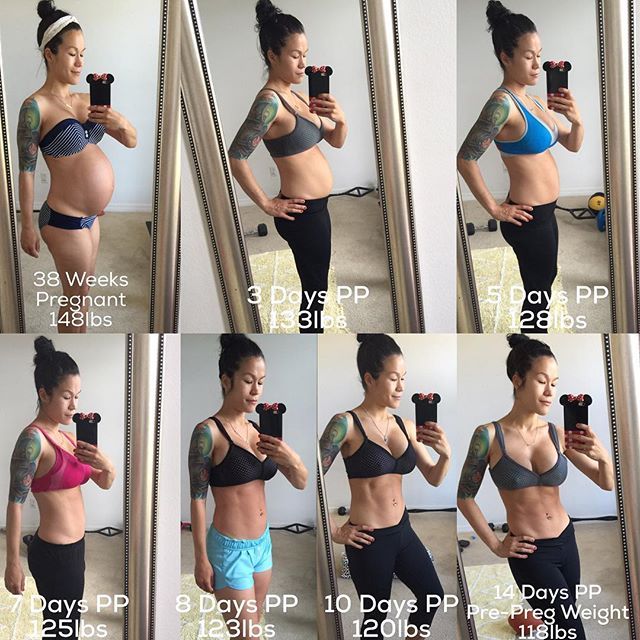 Additionally, water is necessary for your breast milk supply if you are breastfeeding.
Additionally, water is necessary for your breast milk supply if you are breastfeeding.
Other Related Questions
When can I start walking on the treadmill after delivery?
You can begin walking on a treadmill as early as you a few days after delivery if you feel ready for it and your provider has given you clearance to do so.
When using the treadmill for the first time, use a slow tempo to get yourself used to it.
Can I do yoga 3 weeks postpartum?
If you were practicing yoga before and during pregnancy, you might be ready to do some basic yoga poses 3 weeks postpartum.
It all depends on how you feel and if your health care provider has cleared you to do so.
If you suffer from diastasis recti postpartum, you might want to focus on rebuilding your core before doing advanced yoga poses.
Generally, it would be best to avoid any pose that puts a lot of tension on your abdominal area, including the boat pose, upward dog, and triangle pose. I go over more details in – When Can I Do Yoga Postpartum?
I go over more details in – When Can I Do Yoga Postpartum?
It should also go without saying that you should stop if any pose causes you pain or discomfort.
Can you run 6 weeks postpartum?
It depends on the type of delivery you had.
If you had a vaginal delivery, you might be ready to start running at 6 weeks.
Some women may find that they are ready sooner, and some may find that they are not ready at all by 6 weeks.
This is completely fine! You should always listen to your body and start when you feel ready.
If you had a cesarean section, you might need to wait longer- possibly 12 weeks as many tissue layers need to heal to avoid postoperative complications.
Click here to learn more about running postpartum and when you can start.
When can I start exercise after normal delivery with stitches?
If you had an extensive vaginal repair with many stitches, it is best to wait ~3-6 weeks before doing any formal exercise to allow your vagina to heal appropriately.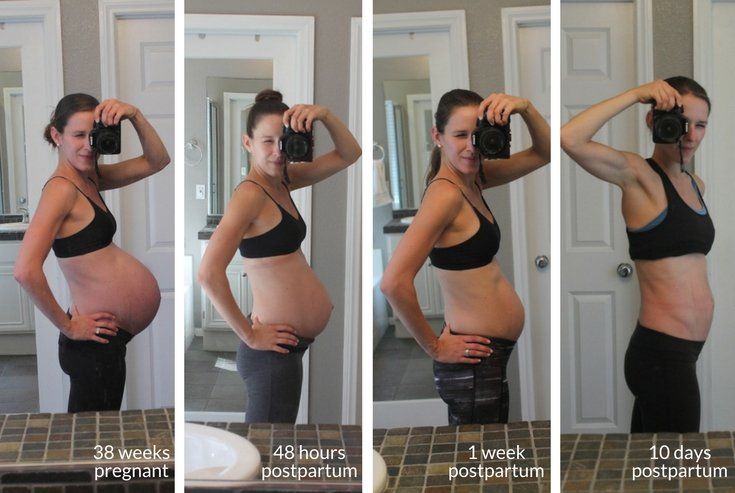
However, if you only have minimal stitching, you might be able to do gentle exercises like walking and diaphragmatic breathing a couple of days after delivery.
Speak with your provider for specific guidance.
My 6 Week Postpartum Workout Plan
If you want a simple postpartum workout plan that you can do ~6 weeks postpartum, download my free PDF!
However, if you would like to go back to lifting weights, check out my post on returning back to weightlifting: Postpartum Weightlifting [A Step By Step Guide]
Final Words On Exercising Before 6 Weeks Postpartum
So there you have it.
If you want to work out before 6 weeks, take your time and speak with your provider first.
If done correctly, you should be able to get active again right away.
Now I want to hear from you.
What have you done to exercise before 6 weeks?
Comment below and let me know!
Related Posts On Postnatal Exercise
- Exercises to Avoid Postpartum
- The Postpartum Squat Challenge [How Far Can You Go?]
- The Best Postnatal Stretches to Perform
- When Is It Safe To Have Sex Postpartum
Get Four Free Workouts To Help Strengthen Your Pelvic Floor & Heal Your Mommy Tummy!
YES- I WANT THE PDF!
Brittany N Robles, MD, MPH, CPT
Brittany Robles is a full-time OBGYN, a NASM certified personal trainer, and health & fitness, expert. She holds a Masters of Public Health degree in maternal health with a special interest in exercise and nutrition. She is also the co-author of The White Coat Trainer. Learn more about her here.
She holds a Masters of Public Health degree in maternal health with a special interest in exercise and nutrition. She is also the co-author of The White Coat Trainer. Learn more about her here.
Sharing is Caring – Send This To A Mom In Need!
9 Exercises That Can Be Done During the 6 Week Postpartum Wait
I often get asked when it is safe to start working out again after having a baby. This is a tough question for me to answer and I actually won’t give a straight-forward answer because each and every female body, delivery, and recovery is so different. Also, I am totally not your doctor-sorry. All I can tell you is to listen to your body and trust yourself at your own risk.
New guidelines from ACOG have recently stated that the 6 week postpartum wait may not be all that nescessary and it has merely become a myth. For some, I would say yes WAIT. But for others who are able to, why not? You must think I am crazy to rush back into exercise so soon after delivery, but not all moms feel like waiting and not all moms should wait.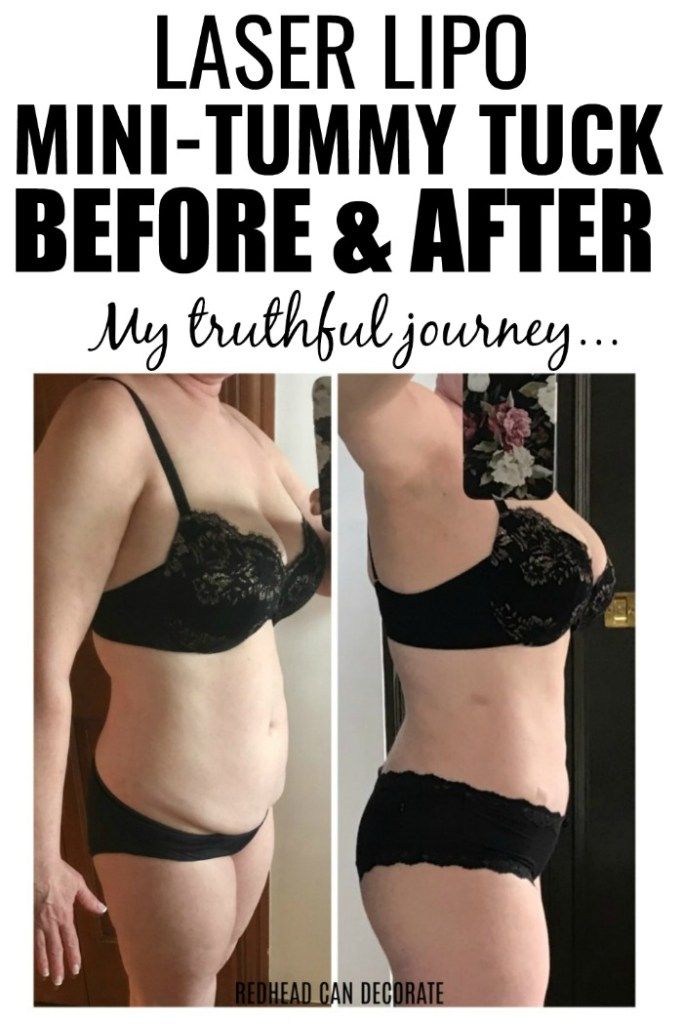
For my postpartum period, I have not been doing too much-just little things here and there since I am not longer bleeding. I am two weeks postpartum now and I have done a few stroller walks, gone out shopping, and did a few bodyweight exercises. I still have not lifted a weight yet because I am not ready just yet. I might make that a goal for the following week ahead, if my body allows.
I have been focusing on light things such as walking, stretching, and restorative exercises for my pelvic floor. During delivery (well, and pregnancy, too) your pelvic floor basically goes to hell and back and if you do not want to spend your entire lifetime pissing yourself with each jump or sneeze, it is wise to do pelvic floor exercises. I will share several of them with you as we go along.
There are so many benefits to resuming exercises shortly after giving birth:
- faster postnatal recovery
- reduced pain
- better posture
- stronger pelvic floor
- Diastasis Recti healing
- faster body bounceback/regained muscle memory
Prior to beginning ANY exercise during the 6 week postpartum wait, please talk to your doctor by simply giving them a phone call and asking them what you can and cannot do.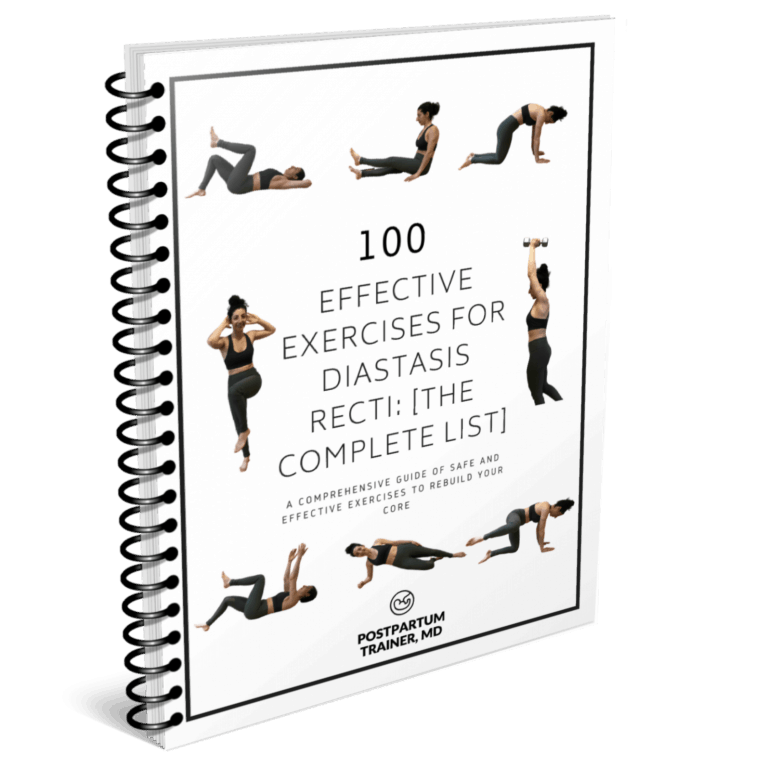 Most will tell you to wait until the 6 week check so that they can check you, but you know your body better than anyone else.
Most will tell you to wait until the 6 week check so that they can check you, but you know your body better than anyone else.
Before beginning any type of routine, keep the following in mind:
- start small and slow
- monitor your bleeding or better yet wait for it to stop
- monitor your pelvic floor
- find out if you have diastasis recti and repair it first
- let your c-section incision heal (if you had one)
- be aware of wobbly joints as the prenatal hormone Relaxin is still within your system for 8 weeks postpartum
- stay hydrated
- rest
- stop if you feel ANY pain and, when in doubt, call your OB/GYN
Here are 10 exercises that can be done during the 6 week postpartum waiting period:
Walking
This is a simple no brainer that anyone can do and that you already do each time you move about your house: walking! You don’t have to go about it briskly.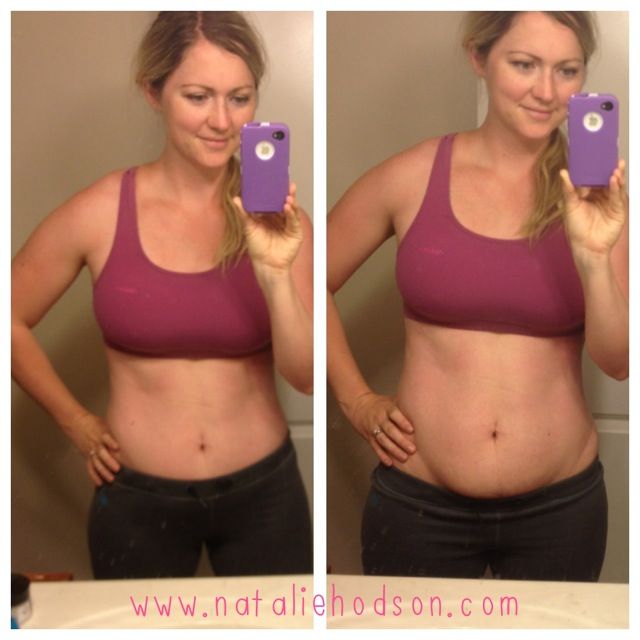 . unless you just wanna and feel up for it. Simple getting out of the house and walking around the neighborhood can not only make you feel better, it can also help jumpstart you back into your fitness regmine.
. unless you just wanna and feel up for it. Simple getting out of the house and walking around the neighborhood can not only make you feel better, it can also help jumpstart you back into your fitness regmine.
Stretching
This is by far my favorite stretch for the postpartum ladies out there who are breastfeeding exclusively. It helps to open up a tight chest and a tight neck. Hold this post for ten seconds and repeat 5 times.
Kegels
To activate your pelvic floor, imagine you are stopping the flow of urine. Hold muscles for 10 seconds (don’t hold your breath) and slowly release. Do 20 holds 5 times a day. This exercise can be done while sitting or standing—even when nursing! There’s really no need for an image since kegels cannot be seen in action, but you can do them standing, sitting, or even lying down!
Pelvic Tilts
Lie on your back with your knees bent such as in a glute bridge stance. “Brace” your stomach-tighten your muscles by pulling in and imagining your belly button moving toward your spine. You should feel like your back is pressing to the floor and your hips and pelvis are rocking upward and back.
“Brace” your stomach-tighten your muscles by pulling in and imagining your belly button moving toward your spine. You should feel like your back is pressing to the floor and your hips and pelvis are rocking upward and back.
Abdominal Bracing
Abdominal bracing is simply tensing (contracting) the abs as if you are about to be hit in the stomach (you don’t have to do this will full force). Bracing the abs will automatically pull in the stomach slightly, but abdominal bracing does not involve pulling in or pushing out the abs. Abdominal bracing activates all the layers of abdominal muscles along with muscles deep in the lower back.
Marching
Lie on your back with your knees bent, keep your feet flat on the floor and your toes pointing straight ahead. Gently draw-in your navel towards your spine and contract your glutes. Slowly lift one foot off the floor with control, hold in the air for a few seconds and lower your foot back to the floor. Repeat with the other foot.
Repeat with the other foot.
Cat/Cow
- Begin with your hands and knees on the floor. Make sure your knees are under your hips, and your wrists are under your shoulders. Begin in a neutral spine position, with your back flat and your abs engaged. Take a big deep inhale.
- On the exhale, round your spine up towards the ceiling, and imagine you’re pulling your belly button up towards your spine, really engaging your abs. Tuck your chin towards your chest, and let your neck release. This is your cat-like shape.
- On your inhale, arch your back, let your belly relax and go loose. Lift your head and tailbone up towards the sky — without putting any unnecessary pressure on your neck. This is the Cow portion of the pose.
- Continue flowing back and forth from Cat Pose to Cow Pose, and connect your breath to each movement — inhale for Cow Pose and exhale on Cat Pose.
- Repeat for at least 10 rounds, or until your spine is warmed up.
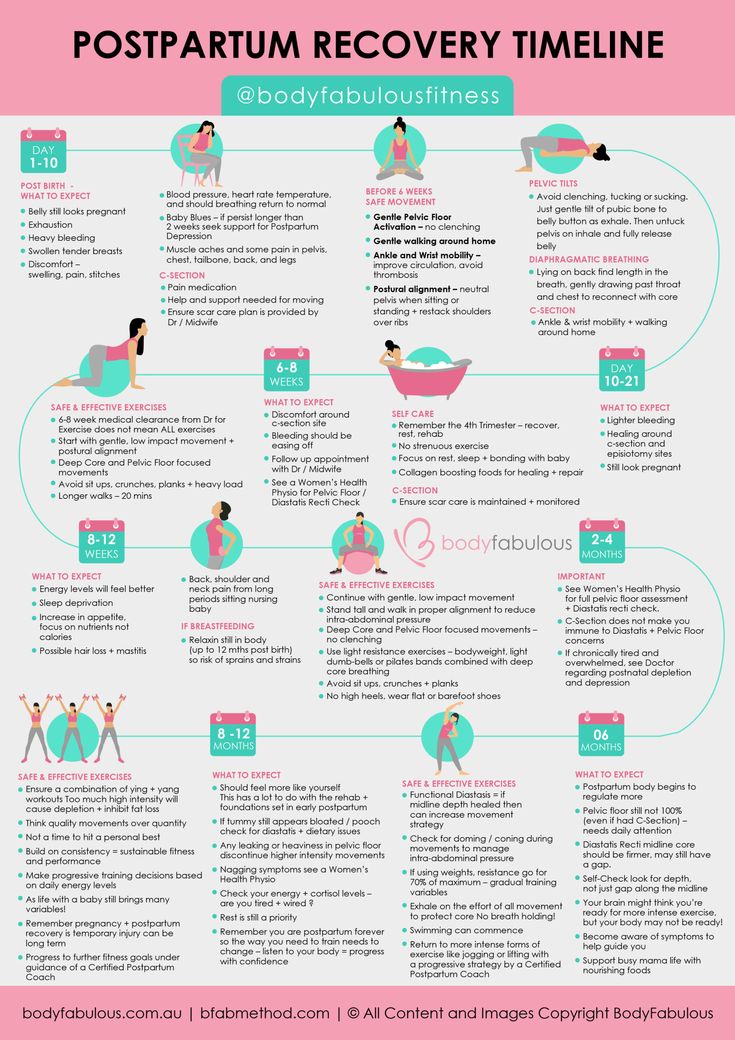
Heel Slides
Lie down on the floor or the bed with your leg flat.
Slowly begin to slide your heel toward your buttocks, keeping your heel on the floor or bed. Your knee will begin to bend.
Continue to slide your heel and bend your knee until it becomes a little uncomfortable and you can feel a small amount of pressure inside your knee.
Hold this position for about 6 seconds.
Slide your heel back down until your leg is straight on the floor or bed.
If you cannot make it to a gym and need to workout from home, try my new Strong Body Guide that is helping busy women worldwide get into their best shape ever. Little to no equipment needed for most moves!
Buy now
In this guide, you can expect:
– ✅ 12 weeks of workouts that can be done at home with little to no equipment.
– ✅ 225 pages long
– ✅ Each workout takes less than 30 minutes-great for busy schedules.
– ✅ step by step instructional picture examples of every move
– ✅ no gym required
– ✅ exercises focus on hiit, strength training, and plymetrics
– ✅ download on any device
– ✅ build a lean tone stomach, butt, thighs, and arms
– ✅ download instantly from anywhere
– ✅ promote fat loss & boost metabolism
– ✅ contains cardio and stretching routines as well!
– ✅ full exercise glossary with images and instructions for every move
*All guides are digital ebooks available instantly worldwide. Compatible on all devices – Android, iPhone, iPad, Kindle, Nook, Computer, Mac.
Compatible on all devices – Android, iPhone, iPad, Kindle, Nook, Computer, Mac.
Your trainer and friend,
SHARE THIS POST:
Recovery after childbirth - how to speed it up?
Can I exercise after pregnancy? What will be the recovery process?
These questions concern many girls who watch their figure and actively go in for fitness before pregnancy. The answer is, in general, of course, positive. Fitness can and should be done. The main thing is to approach this issue very competently.
It is no secret that heavy physical activity and a strict diet are contraindicated for a young mother. Especially during breastfeeding, when nutrition should be under maximum control anyway. Breastfeeding itself is a strict diet: fat deposited for 9months on the hips and waist, according to the laws of nature, will leave your body along with breast milk.
But this does not mean that you should forget about movement and minimal physical activity. During this period, a young mother will spend most of her time at home, where the body does not receive the load that it received before childbirth, and it is for this reason that women often gain weight after childbirth.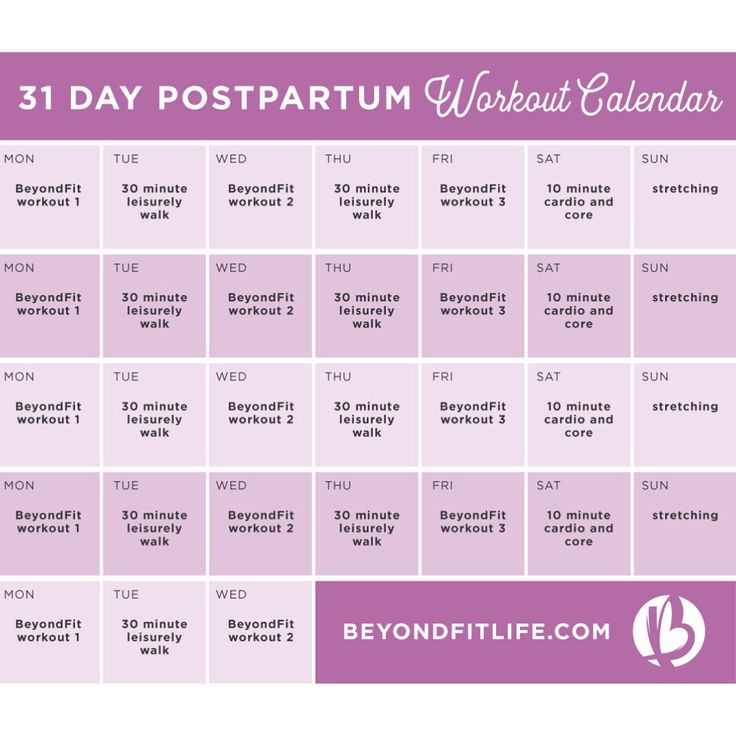
Those who were engaged in fitness during or before pregnancy manage to keep their figure after childbirth. nine0011 Then the question arises: what should those who did not go in for sports and are not accustomed to physical activity do?
First advice : at least exercise at home, because it is important to remember that even minimal physical activity can lead to tangible results and return the figure after childbirth.
Gradually, day after day, week after week, vigor will return, skin tone will appear, which will become more elastic, and muscles will become stronger and stronger.
These steps will help you get your body back in shape, and in the first days after giving birth you will be able to do basic exercises at home. They will help the body recover, become stronger and fit and achieve the desired harmony. nine0003
Great importance should be paid to nutrition during this period. Eat more fresh vegetables and fruits, give preference to proteins, healthy fats and slow carbohydrates, minimize the amount of sweet, fried and “rich” in seasoning foods, drink more water (tea, coffee, juices are liquid, in this case we are talking about plain water ).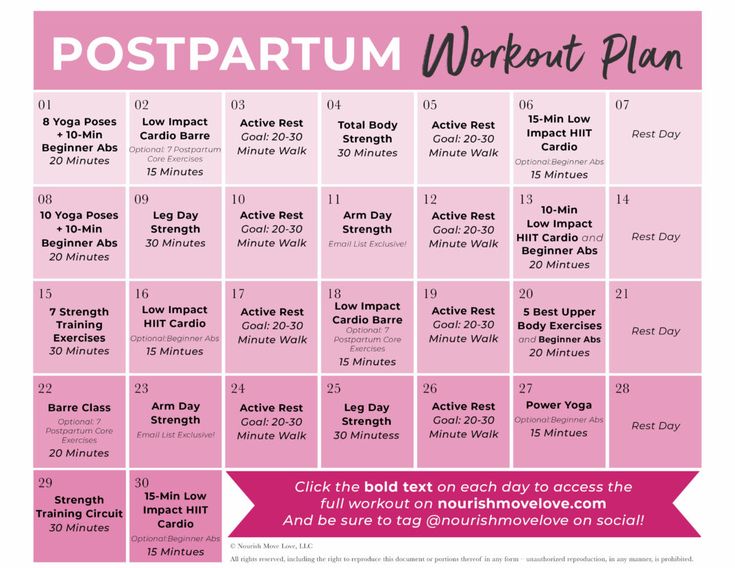
When and how to start?
Recent recommendations from experts suggest that fitness should not begin until 6 weeks after birth. But the important point is that each woman has her own recovery speed and, accordingly, they will perform certain exercises (even the most elementary) at their own pace. nine0003
There are different types of childbirth: natural or by caesarean section. The last option is abdominal surgery, recovery after which takes much longer than after natural childbirth.
If natural childbirth went without complications, then, by and large, a woman can start playing sports within a few days after childbirth. Provided that she herself feels that the body is ready for this.
Those who have a caesarean section or multiple ruptures should first consult with their doctor before starting their training. And even when they begin, perform them as calmly as possible, without a sharp load on the body. nine0003
There are several items that are mandatory during the recovery period:
1.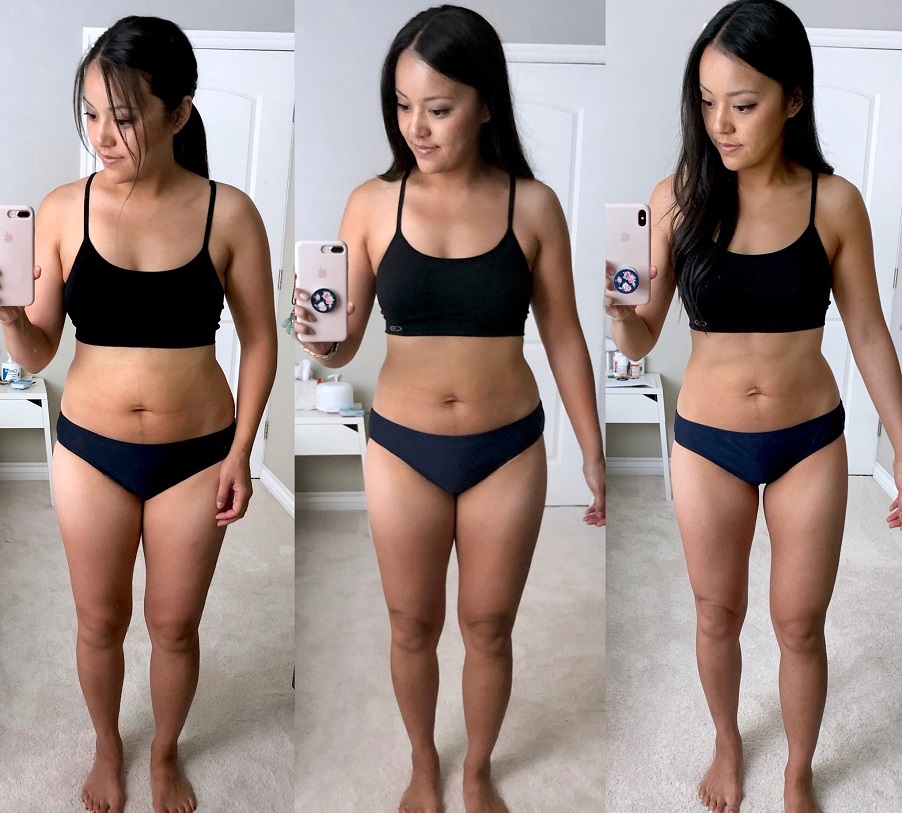 Healthy women after childbirth are recommended to do fitness for no more than 150 minutes a week, that is, 2-3 times a week for 45-55 minutes.
Healthy women after childbirth are recommended to do fitness for no more than 150 minutes a week, that is, 2-3 times a week for 45-55 minutes.
2. You need to warm up well before training, start slowly and gradually, and then only increase the pace.
3. Watch your heart rate, avoid overexertion, do exercises measuredly at your own pace. nine0003
4. Drink more water.
5. Wear supportive or compression garments during exercise.
And, perhaps, the most important thing: in case of pain, stop exercising and consult a doctor.
One more piece of advice: it is better to start (or resume) classes in a fitness club 1-2 months after giving birth. And I would advise you to start with calm workouts: Pilates, mind body or yoga.
As an alternative to the gym, visit the swimming pool. In general, you need to consider those activities that do not carry an intense, too much load on the body, but are maximally aimed at strengthening the abdominal muscle.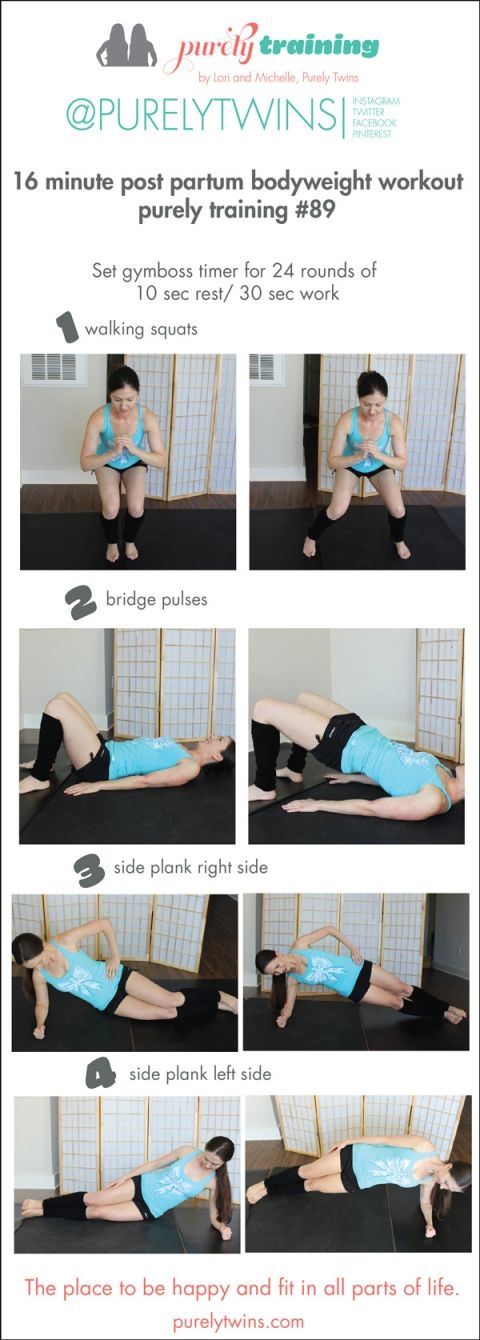 nine0003
nine0003
The abdominal muscle is a problem area, because it stretches as much as possible during pregnancy, so it becomes important for women to tighten it.
Of course, after childbirth, all muscles need to regain their tone, but special attention is paid to the abdominal muscle. In this regard, I would advise you to start with a Pilates class.
Attend these classes in the club, go to the pool and do light exercises in the gym without any desire for great results. No big weights are needed, use small ones to start gradually. And it is important to understand that fitness after childbirth will not be easy, it can work wonders, give you the necessary strength to raise a child and fully enjoy the joys of motherhood, but everything comes through work. nine0003
Schedule workouts according to your own abilities, listen to your body.
Train in pairs to stay motivated. Work out with relatives, friends or neighbors who, like you, are losing weight after giving birth.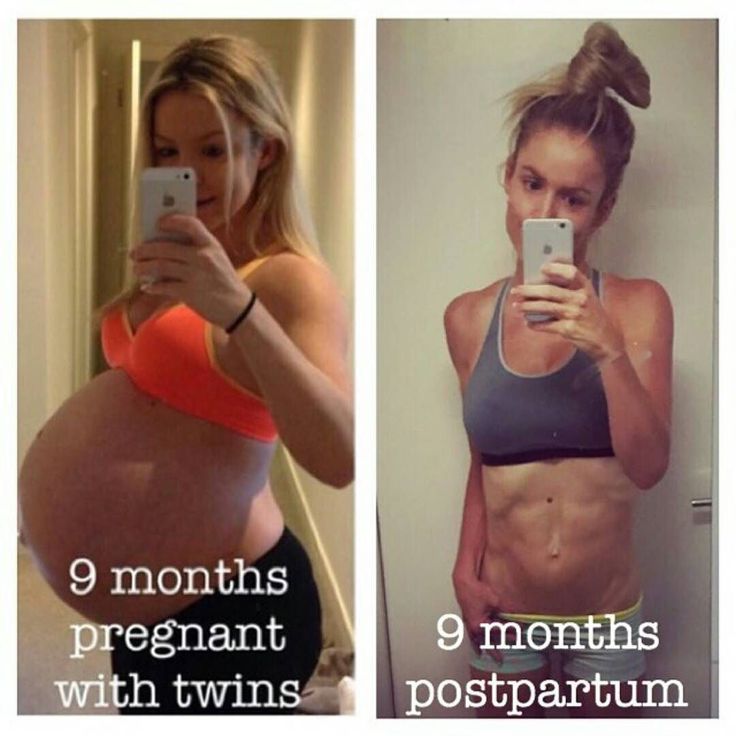
Include your child in your activities. And it is useful for your figure, and it is interesting for the baby.
Walk with your stroller and walk up to 10,000 steps a day. Walking at a moderate pace in a faster time can positively affect your forms. nine0003
Follow these simple guidelines and your body will thank you and you will begin to see the first results.
This is how you will stay slim, beautiful and energetic!
Got a question? Leave a request for a call back or contact us by phone +7 (343) 288-55-46
Training after childbirth: when and how to start
Childbirth is an important, but also happy period in a mother's life. At this time, a woman feels both physiological and psychological changes in herself. The task of a fitness trainer is to help you successfully live through the period of pregnancy and recover from childbirth by doing exercises, support and give the right recommendations. nine0003
When to start exercising after giving birth
If a client asks to resume training already a week after giving birth, do not rush to make an appointment in the fitness room. Within 6-8 weeks it is not recommended to resume physical activity except for breathing exercises. During this time, the uterus returns to its previous size and natural postpartum discharge stops. After 6-8 weeks, the woman goes for a postpartum examination to the gynecologist, and he gives permission to exercise. And breathing exercises can be performed already 2 hours after birth. nine0003
Within 6-8 weeks it is not recommended to resume physical activity except for breathing exercises. During this time, the uterus returns to its previous size and natural postpartum discharge stops. After 6-8 weeks, the woman goes for a postpartum examination to the gynecologist, and he gives permission to exercise. And breathing exercises can be performed already 2 hours after birth. nine0003
After caesarean section
In this case, the recovery period will be longer than 6-8 weeks. You can do fitness only after the fabric over the seam begins to move so that there is no adhesive process. The seam must be examined by a doctor and then gives permission.
Training can be done with a trainer online or in a personal mode at home. In this case, you need to deal with a specialist who knows the features of postpartum recovery. If this is not possible, a woman can independently master breathing exercises by consulting a gynecologist. nine0003
How to exercise for a successful recovery
If the pregnancy is going well and the woman is doing well, she can continue to do the activities she enjoys until the last day of her pregnancy.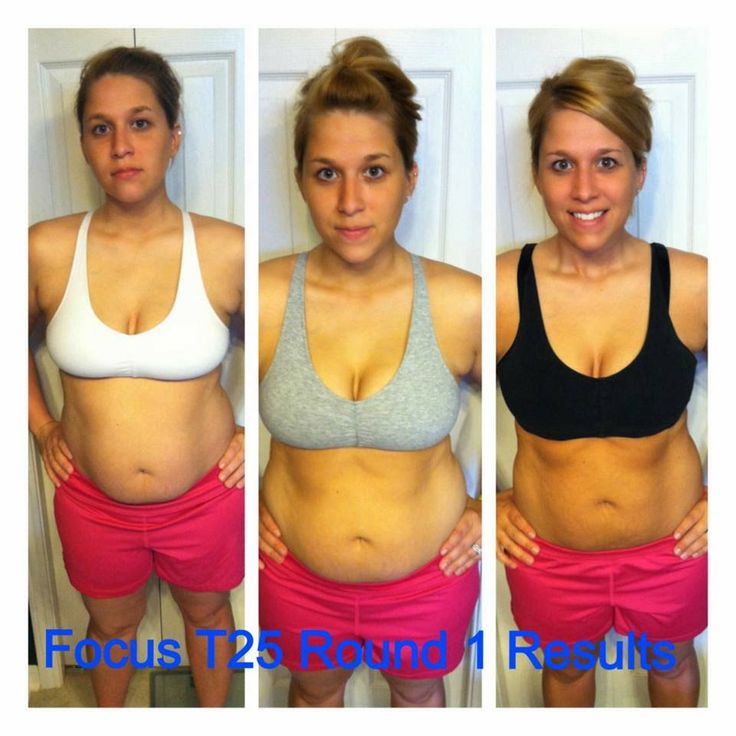 But taking into account the load that is allowed in all three trimesters. She can perform exercises on all muscle groups - these should be antagonist muscles, and consciously control the muscles of the pelvic floor. Such training creates favorable conditions for the progression of pregnancy and successful recovery after the birth of a child. nine0003
But taking into account the load that is allowed in all three trimesters. She can perform exercises on all muscle groups - these should be antagonist muscles, and consciously control the muscles of the pelvic floor. Such training creates favorable conditions for the progression of pregnancy and successful recovery after the birth of a child. nine0003
After childbirth, it is better to start with breathing exercises that will help restore the function of the abdominal muscles. But it is also recommended to perform exercises for the muscles of the foot and work with the muscles of the face (oral diaphragm).
Breathing exercises help contract the uterus and return it to prenatal size. They help to return innervation to the rectus, transverse and oblique muscles of the abdomen and consciously control them. Stretching the abdomen will be helpful. To do this, take a deep breath, while exhaling, pull the navel to the spine, hold for 2 counts and then exhale smoothly. Advise doing this exercise every time you have free time, up to 10 repetitions per day.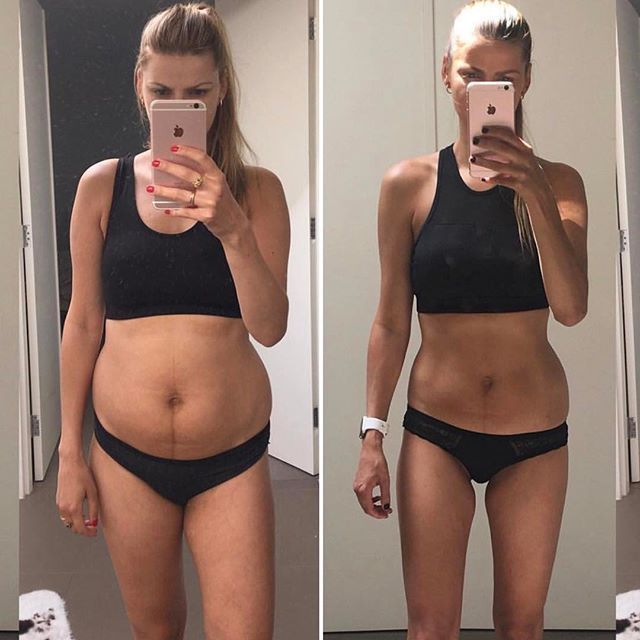 You can perform it in any starting position and anywhere: at home, on a walk, sitting on a bench, etc. nine0003
You can perform it in any starting position and anywhere: at home, on a walk, sitting on a bench, etc. nine0003
Exercises for the muscles of the feet will stimulate the work of the ankle joint, increasing the venous return and unloading the muscles of the foot. After all, she works 12 hours a day. Oral diaphragm exercises will relax the chewing muscles and correct the position of the temporomandibular joint.
It is possible to return to the physical activity that was before childbirth after the cessation of postpartum discharge. The woman then goes to the doctor for a postnatal check-up, and he issues a permit. At the same time, you need to start with the load on which the client stopped before giving birth in the 3rd trimester. During this period, avoid exercises associated with straining the abdomen: squats, jumps, push-ups in a horizontal position, throws, shock and stress loads. nine0003
Pilates, yoga, water aerobics and swimming in the pool can help in the early stages of recovery.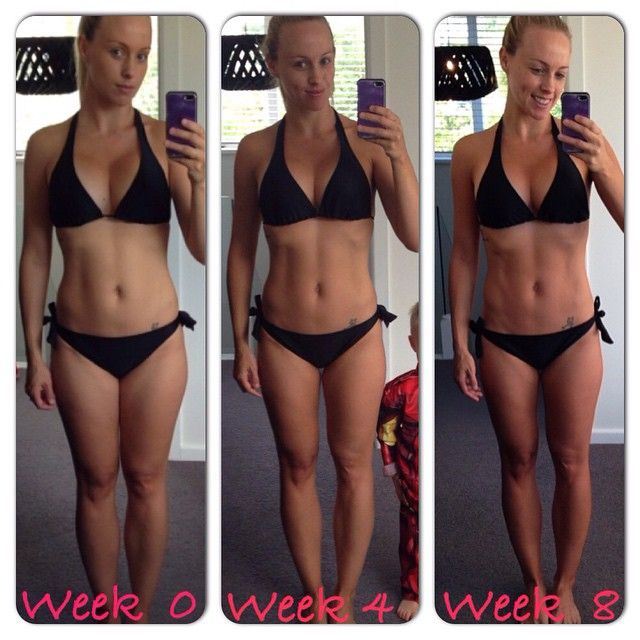 It is not recommended to attend high-intensity group training. Advise the client on personal training or at least a consultation with a competent trainer.
It is not recommended to attend high-intensity group training. Advise the client on personal training or at least a consultation with a competent trainer.
A woman can return to her favorite fitness activity not earlier than 5-6 months after giving birth. If this is done earlier, health problems may arise. Before giving birth, changes occurred over 9 months, and in 2-3 months it is impossible to recover without damage to the body. After all, a woman does not know what is happening in her body. It may seem to her that she feels good, but her internal organs are not yet ready to withstand jumping, straining, running, etc. It is in six months that the ability to perform its functions returns to the muscles. In addition, the recovery process can be affected by the presence of previous pregnancies and chronic or previous diseases during pregnancy. nine0003
The recovery period after childbirth is a careful and important period in a woman's life. This is a natural process and there is no need to rush it.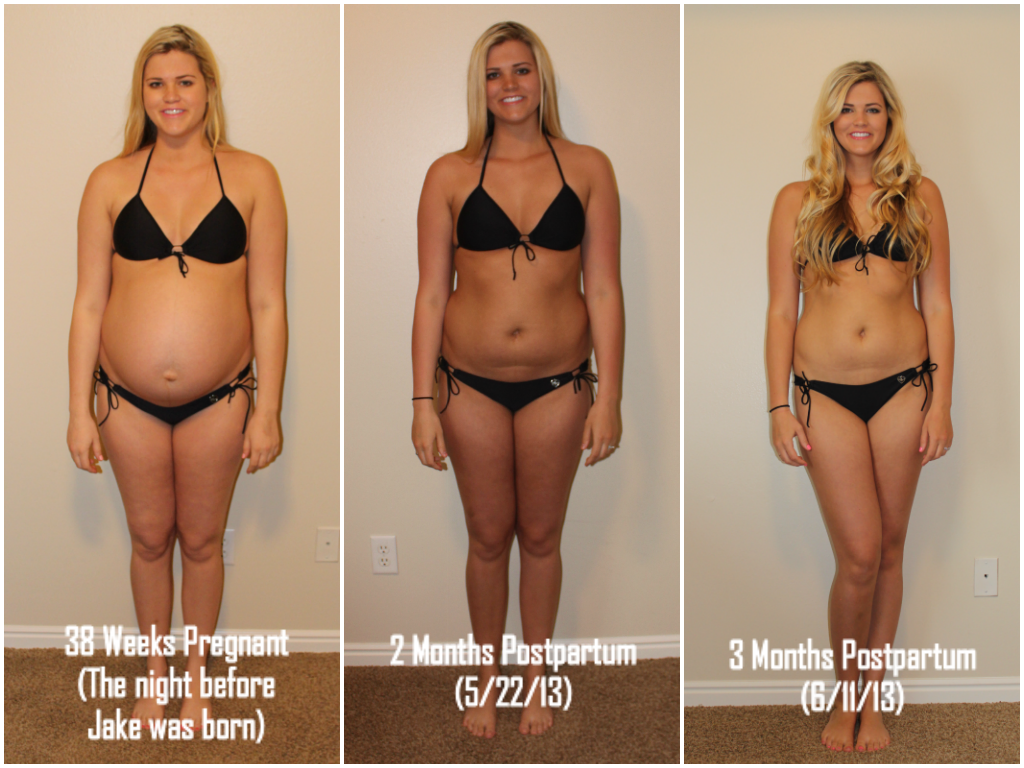 Therefore, the best physical activity for a woman at this time is walking with a stroller, breastfeeding, breathing exercises and exercises that bring pleasure.
Therefore, the best physical activity for a woman at this time is walking with a stroller, breastfeeding, breathing exercises and exercises that bring pleasure.
Diet recommendations
The main and main recommendation is a regular full and varied diet. Recommended 5-6 meals a day every 3-4 hours. Such a scheme will reduce the load on the gastrointestinal tract. Food should be in small portions in the form of heat. You also need to drink enough clean water and green tea. In addition, the doctor may recommend teas that increase lactation. nine0003
There are no foods that must be included in the diet. Only those to which the woman was allergic before pregnancy, and obviously allergenic are excluded: citrus fruits, seasonal products (strawberries, berries), etc. It is also not recommended to eat raw fish, sushi, sea kale - they may have a high content of lead and mercury. Farm-raised fish should be added to this list, as it contains antibiotics, and dried fruits, which are treated with substances that prevent rot. nine0003
nine0003
In children of the first year of life, colic may appear, which accompanies the process of maturation of the gastrointestinal tract. Therefore, there is no connection between the mother’s diet and the presence of colic in the child. But a woman can adjust her diet and refuse certain types of products if she has any suggestions that this may affect the condition of the child.
During breastfeeding, a woman should get all the amino acids and minerals from normal food. Excess consumption of refined carbohydrates: baked goods, condensed milk and white flour products will contribute to the accumulation of excess fat in the woman's body and adversely affect the child. nine0003
Psychological features of working with clients after childbirth
During the period of postpartum recovery, a woman is more sensitive, so the trainer needs to pay attention to her. During breastfeeding, her prolactin hormone is elevated. It stimulates lactation, but also affects the psycho-emotional state - sudden sadness, mood changes, emotional background, etc. may appear. Therefore, it is important for the coach to take into account the condition of the woman when she comes to training, and give an adequate load that the client can handle. If a woman is in harmony with herself: not anxious, informed and has the psychological support of relatives or a psychotherapist, she will be able to track her conditions herself and cope with them. nine0003
may appear. Therefore, it is important for the coach to take into account the condition of the woman when she comes to training, and give an adequate load that the client can handle. If a woman is in harmony with herself: not anxious, informed and has the psychological support of relatives or a psychotherapist, she will be able to track her conditions herself and cope with them. nine0003
If there is no support, then these states will intensify. Then the trainer should be ready that the client will come to the lesson not for the training itself, but for psychological support. A woman may refuse to exercise because she will have a greater need to share her condition than in physical activity. In this case, it is important for the coach to ask the woman how she feels, why she needs these workouts, why she is ready to spend so much time going to the gym and with whom the child is staying. Perhaps it would be better to recommend a specialist who will help her deal with her psycho-emotional state, and only then return to training.
